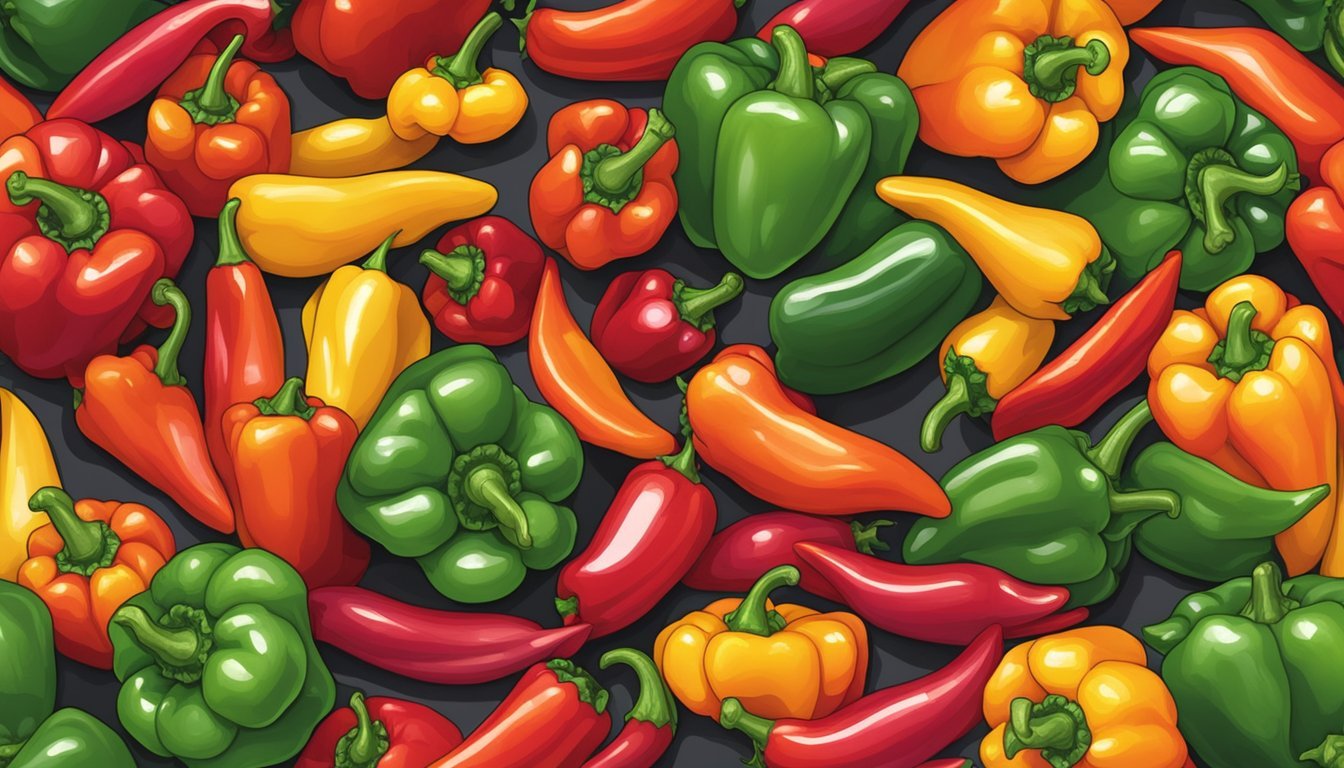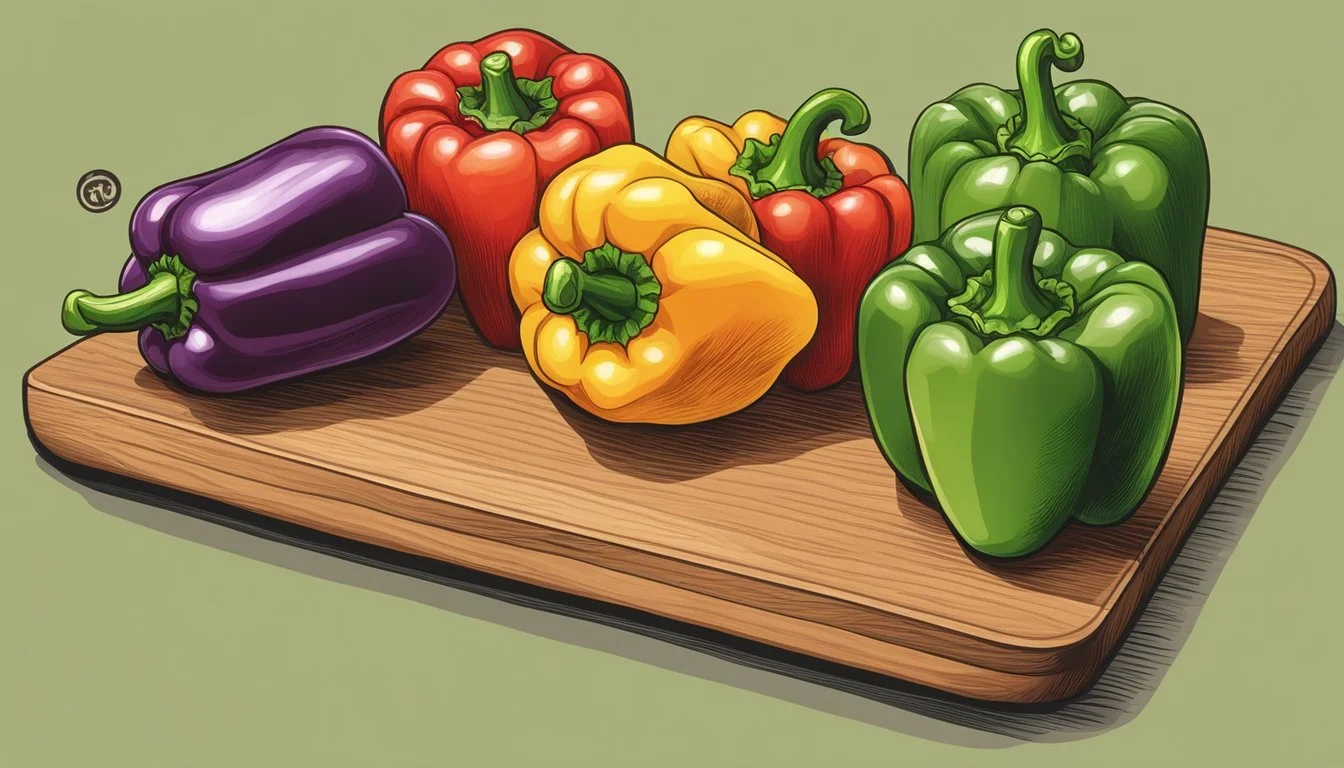Frozen vs Fresh Peppers: A Crisp Comparison
Peppers are a versatile and flavorful addition to many dishes. Whether you prefer them raw in salads or cooked in stir-fries, the choice between fresh and frozen peppers can impact your culinary experience. Both fresh and frozen peppers retain their nutritional value, but the texture and convenience factors differ.
Fresh peppers offer a crisp texture and vibrant colors that can enhance the visual appeal of meals. They provide an immediate option for cooking or snacking. Frozen peppers, on the other hand, are a convenient alternative that can be stored for extended periods. They're pre-cut and ready to use, saving time in meal preparation.
The quality of frozen peppers has improved significantly over the years. Modern freezing techniques help preserve the nutritional content, making frozen peppers a comparable alternative to fresh produce. This is especially beneficial when certain pepper varieties are out of season or unavailable in fresh form.
Benefits and Drawbacks of Fresh Peppers
Fresh peppers offer distinct advantages and challenges for consumers. Their crisp texture and vibrant flavors make them a popular choice, but availability and nutrient retention can vary.
Nutrient Profile
Fresh peppers pack a nutritional punch. They're rich in vitamin C, with bell peppers containing more than oranges by weight. Red bell peppers provide an excellent source of vitamin A, while hot peppers offer capsaicin, known for its potential health benefits.
Fresh peppers also contain fiber, which aids digestion and promotes feelings of fullness. Their water content is high, contributing to hydration.
However, nutrient levels can decrease over time after harvesting. Proper storage in cool, dry conditions helps maintain nutritional value.
Availability and Seasonality
Fresh peppers are widely available in grocery stores year-round. However, their peak season typically runs from July to November in many regions. During this time, peppers are often more flavorful and less expensive.
Local farmers' markets may offer a wider variety of fresh pepper types during peak season. This allows consumers to explore unique flavors and support local agriculture.
Off-season peppers may be imported, potentially affecting quality and price. Transportation and storage can impact freshness and nutrient content.
Climate-controlled greenhouses extend growing seasons in some areas, improving year-round availability of fresh peppers.
Benefits and Drawbacks of Frozen Peppers
Frozen peppers offer convenience but come with some potential downsides. They can be a time-saving option for meal prep, though proper storage is crucial to maintain quality.
Convenience for Meal Prep
Frozen peppers are pre-cut and ready to use, saving time in the kitchen. They eliminate the need for washing, chopping, and deseeding. This makes them ideal for quick stir-fries, soups, and casseroles.
Freezing peppers preserves nutrients well. Many vitamins and minerals remain intact through the freezing process. In some cases, frozen peppers may retain more nutrients than fresh ones that have been stored for extended periods.
Frozen peppers have a long shelf life. They can be kept in the freezer for 6-8 months without significant loss of quality. This reduces food waste and ensures peppers are always on hand for recipes.
Risk of Freezer Burn
Improper storage can lead to freezer burn, affecting texture and flavor. Peppers may become mushy or develop ice crystals when thawed. To prevent this, use airtight freezer bags or containers.
Excess moisture can cause peppers to clump together. Pat them dry before freezing and spread them on a baking sheet to freeze individually first. This allows for easier portioning later.
Frozen peppers may lose some crispness. They're best used in cooked dishes rather than raw applications. Thawed peppers work well in sauces, stews, and baked goods where texture changes are less noticeable.
Proper Freezing Techniques
Freezing peppers correctly preserves their flavor and texture for future use. The process involves careful preparation, blanching, and proper packaging to maintain quality.
Blanching Process
Blanching peppers before freezing helps preserve color, texture, and nutrients. Start by washing and drying the peppers thoroughly. Remove stems, seeds, and membranes. Cut peppers into desired shapes - strips, rings, or diced pieces.
Bring a large pot of water to a boil. Submerge pepper pieces for 2-3 minutes. Remove promptly and plunge into ice water to stop the cooking process. This quick temperature change helps maintain crispness.
Drain blanched peppers well and pat dry with clean towels. Excess moisture can lead to freezer burn.
Setting Up for Freeze
Spread blanched pepper pieces on a parchment-lined baking sheet. Ensure pieces don't touch to prevent sticking. Place the sheet in the freezer for 1-2 hours to flash freeze.
Once frozen, transfer peppers to freezer bags. Remove as much air as possible to prevent freezer burn. Use a straw to suck out excess air before sealing.
Label bags with contents and date. Frozen peppers keep well for up to 12 months. For best quality, use within 6-8 months.
Whole peppers can be frozen without blanching. Simply wash, dry, and freeze on a baking sheet before transferring to freezer bags.
Usage in Culinary Preparations
Fresh and frozen peppers offer distinct advantages in cooking. Their differences in texture, preparation, and cooking times impact various dishes and culinary techniques.
Cooking with Fresh Peppers
Fresh peppers provide crisp texture and vibrant flavors. They require washing, coring, and removing seeds before use. A sharp knife facilitates easy slicing or dicing.
Fresh peppers excel in raw applications like salads and crudités. They also shine in quick-cooking methods such as stir-fries, where their crunch adds textural contrast.
Roasting fresh peppers intensifies their sweetness. Chefs often char them over an open flame or under a broiler, then peel off the skin for a smoky flavor.
Stuffed peppers showcase the versatility of fresh bell peppers. The hollow cavities hold various fillings, from rice and meat to vegetables and cheese.
Incorporating Frozen Peppers into Recipes
Frozen peppers offer convenience and year-round availability. They come pre-cut, eliminating prep time. Thawing is optional for many cooking methods.
Frozen peppers work well in cooked dishes like soups, stews, and casseroles. Their softer texture blends seamlessly into these preparations.
They adapt easily to slow-cooking methods. Frozen peppers release moisture during cooking, contributing to sauces and braised dishes.
In stir-fries, frozen peppers cook faster than fresh ones. They're best added towards the end of cooking to prevent overcooking.
Oven-roasted dishes benefit from frozen peppers' moisture content. They help prevent dryness in baked meals like fajitas or sheet pan dinners.
Managing Food Quality and Waste
Proper storage methods and smart freezing techniques can significantly impact the quality and longevity of peppers. These practices help maintain nutritional value and reduce unnecessary food waste.
Extending Shelf Life
Freezing peppers is an effective way to extend their shelf life. Frozen peppers can last up to 8 months when stored properly. To freeze bell peppers:
Wash and dry thoroughly
Remove stems, seeds, and membranes
Cut into desired shapes (strips, dices, or rings)
Spread on a baking sheet and freeze for 1 hour
Transfer to airtight freezer bags or containers
This method preserves the peppers' nutritional content and flavor. For best quality, use frozen peppers within 6 months.
Fresh peppers can be refrigerated at 45°F (7°C) with 90-95% humidity for 2-3 weeks. Store them unwashed in the crisper drawer, wrapped in a paper towel to absorb excess moisture.
Reducing Food Waste
Freezing peppers helps reduce food waste by preserving excess produce. This is especially useful when peppers are in season and abundant. Frozen peppers are versatile and can be used in various dishes, from stir-fries to soups.
To minimize waste:
Buy only what you need
Freeze surplus peppers before they spoil
Use frozen peppers within 8 months for best quality
Thaw only the amount needed for each recipe
Freezing other vegetables like peas and spinach follows similar principles. These practices help households manage their produce more efficiently, reducing overall food waste and saving money.



